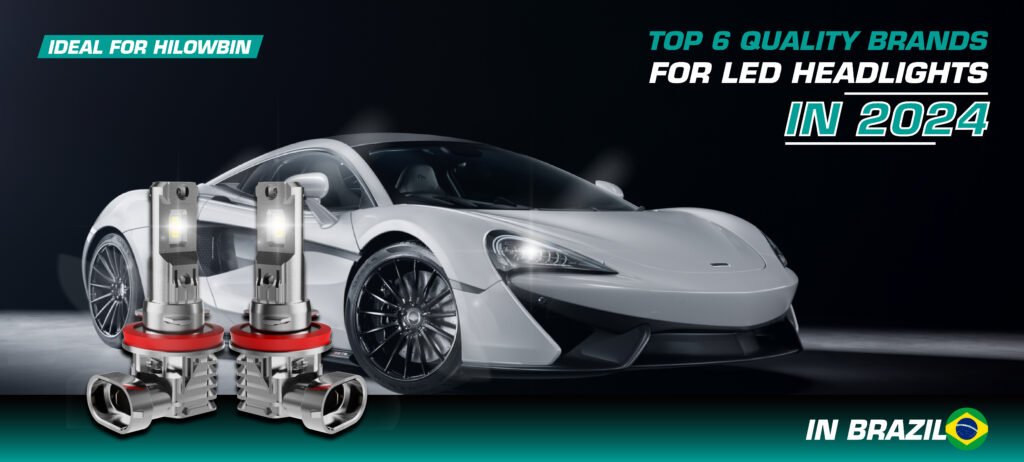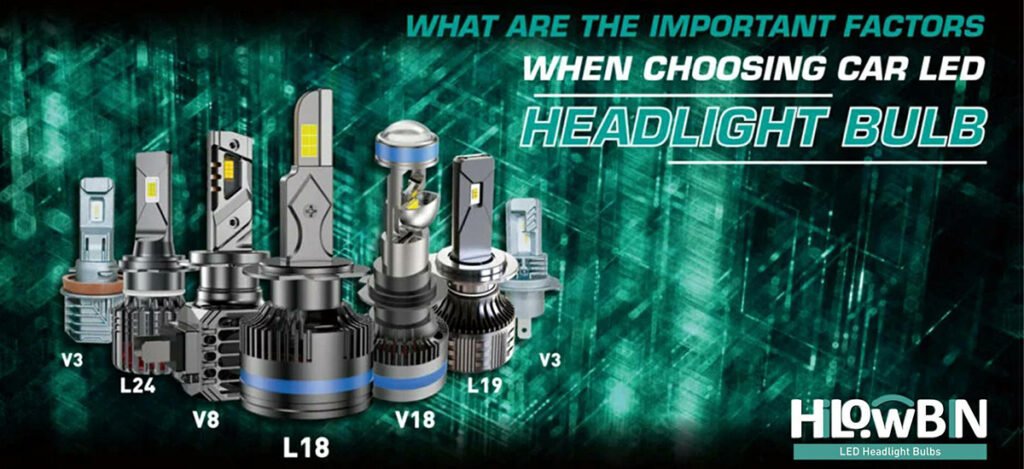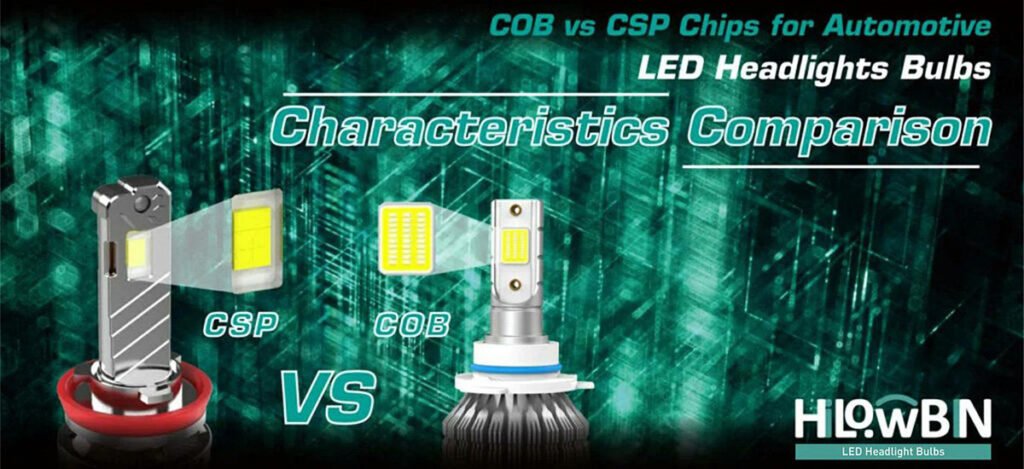Why do newly installed LED headlights often flicker? When you choose to replace your factory headlights with LED bulbs, Canbus error codes can frequently become a major issue. LED headlight decoding problems not only have the potential to limit your visibility at night but can also cause flickering, failure to illuminate, or trigger dashboard warnings, all of which can impact driving safety.
In this blog, you will explore the causes of LED headlight decoding issues and learn some effective tips to help you resolve these common problems.
What are LED Headlight Decoding Problems?
If you experience the following issues after installing LED headlight bulbs and starting the engine, you might be facing LED headlight decoding problems:
Radio interference
Dashboard error messages
Flickering when the bulbs are turned on
Bulbs remain slightly illuminated after being turned off
Abnormally dim light output
Daytime running lights not functioning properly
Vehicles from Volkswagen, Ford, Jeep/Chrysler, Mercedes, and those using Pulse Width Modulation (PWM) technology are most likely to encounter these decoding issues.
What Causes LED Headlight Bulb Error Codes?
Power Mismatch
LED headlight bulbs often do not match the power specifications of OEM halogen lamps. For example, standard halogen bulbs typically have a wattage of 55W with a working current of 4.5A. Aftermarket LED lights may range from 20W to 110W. This discrepancy can cause vehicles with strict calibration to register an error in the onboard computer system.
Polarity Issues
If you install LED headlight bulbs and they don’t turn on, it could be due to a polarity issue. This is easy to fix—simply remove the bulb, flip it, and plug it back in.
Headlight Circuit Issues
Error codes can also result from circuit problems, such as faulty components like the headlight switch or relay. In older vehicles, the headlight switch assembly may include a built-in circuit breaker. A short circuit could cause both headlights to flicker together, whereas a single headlight flickering independently suggests a different issue. Advanced DIY enthusiasts can diagnose such issues by checking for voltage drops using a voltmeter.
Daytime Running Light (DRL) Issues
Some vehicles use Pulse Width Modulation (PWM) for daytime running lights (DRLs). PWM reduces average power by chopping it into discrete segments. Replacing an OEM halogen bulb with an LED in a vehicle using PWM for DRLs can cause CANbus error codes due to the pulsating power. In vehicles without PWM, the lower voltage of DRLs may cause LED bulbs to flicker or fail to turn on.
How to Address LED Headlight Decoding Issues?
To resolve LED headlight decoding problems, consider the following solutions:
Use CANbus-Compatible LED Headlight Bulbs
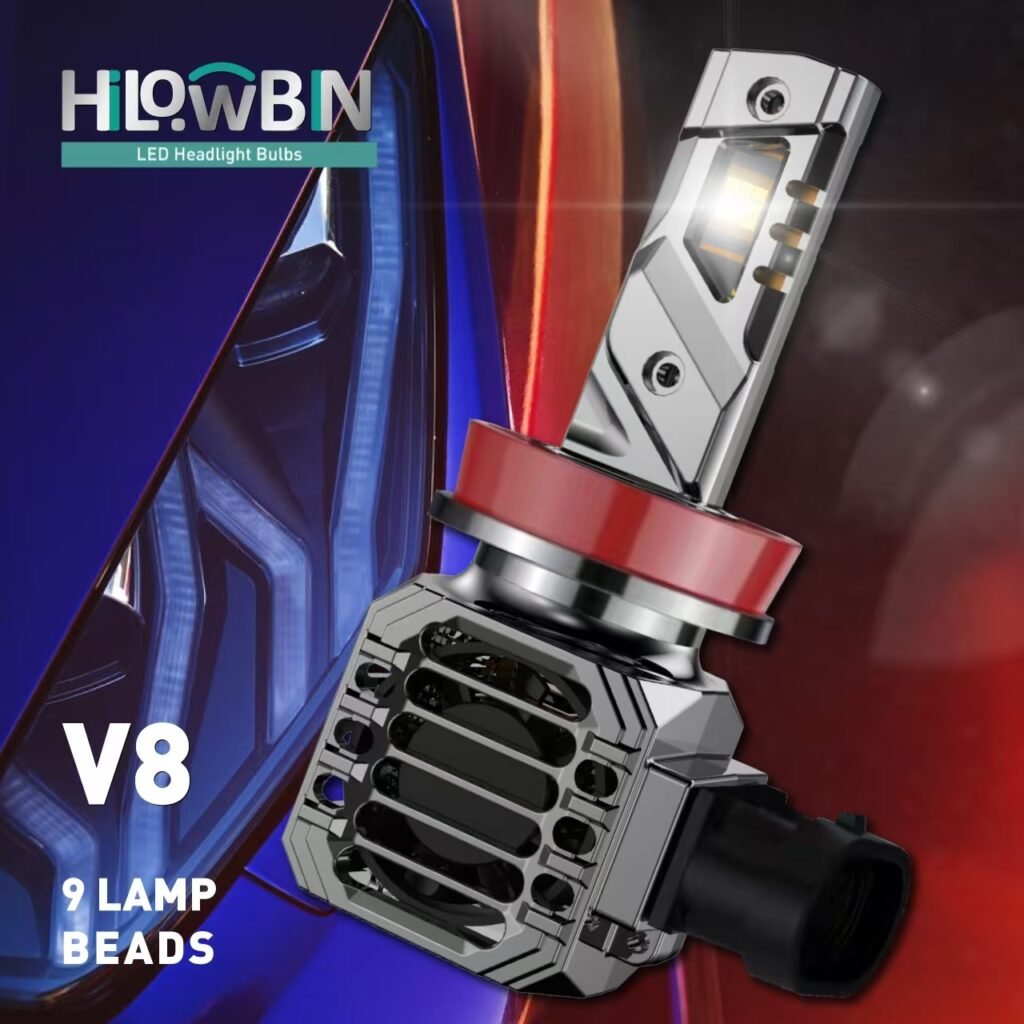
The most effective and direct solution is to use Canbus error-free LED headlights, which ensure a stable and consistent voltage supply to the LED lights. This is particularly important for classic or German vehicles, as their Canbus systems have strict requirements for headlight voltage and current.
For example, the HILOWBIN V8 series is an excellent choice. These bulbs come with an additional Canbus driver that adjusts the operating current to better meet the Canbus system’s requirements, thus avoiding compatibility issues with the vehicle’s electronic system.
LED Decoder
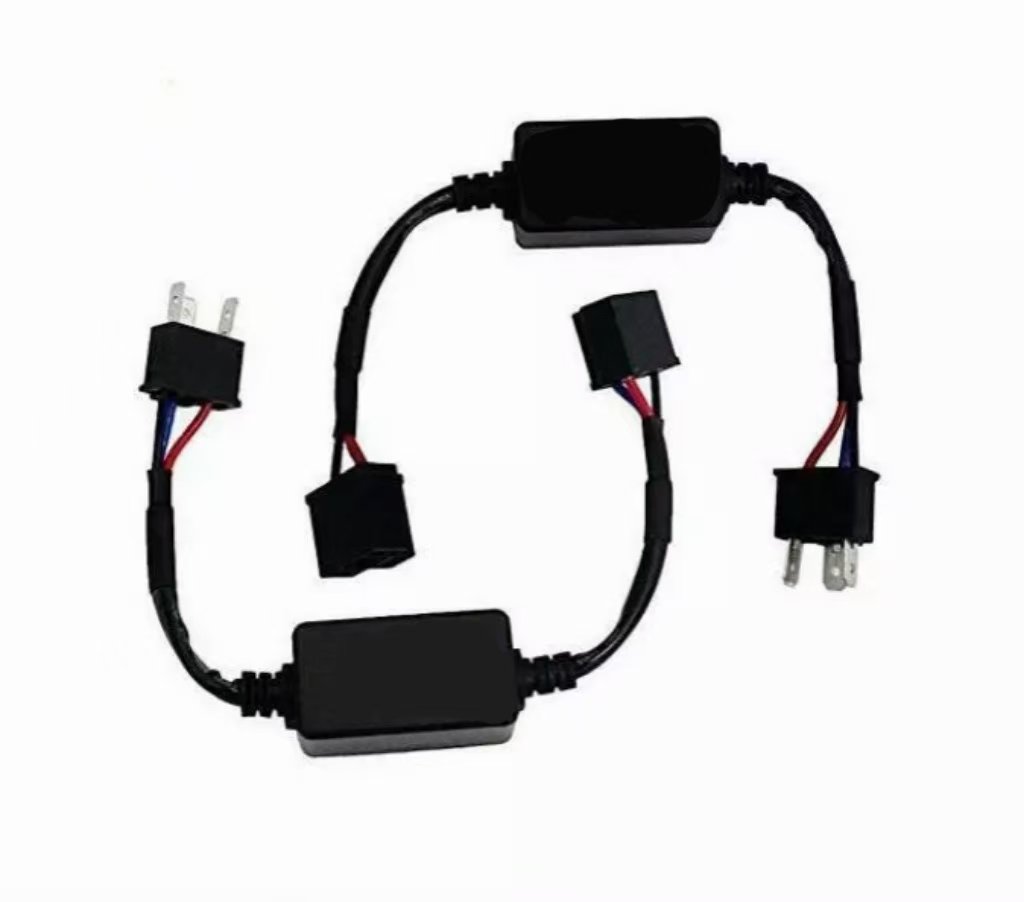
Some car manufacturers use pulsed power for halogen lamps to reduce electricity use and heat output. This intermittent power does not affect the performance of halogen bulbs. When switching from halogen bulbs to LED headlights, you need a steady current supply. LED decoders with high capacitance and stable flowing current come into play at this point, which can stably store and release current, helping to stabilize lighting.
Anti-flickering adaptor and warning cancelers

Solving the problem of flickering lights caused by poor connections between automotive electronics and LED headlamps can indeed be accomplished through the use of capacitors, alarm eliminators, or anti-flicker adapters.
Capacitors store charge in a circuit and provide extra charge to smooth out the current and reduce flicker when there is a sudden change in current. In automotive circuits, capacitors are often used as filters to help stabilize the supply voltage and reduce the effects of voltage fluctuations on LED headlights.
Alarm arrestors are primarily used to eliminate false triggers in automotive alarm systems, but they can also be used to address flickering LED headlights. By eliminating or reducing transient changes in current, alarm arrestors stabilize the current to the LED headlamps and reduce flickering.
Anti-flicker adapters are specifically designed to address flickering LED headlamps. They usually contain a small electronic controller that automatically adjusts the current to ensure that the LED headlamps work stably and reduce flickering.
Installation Steps:
- Select the anti-flash adapter that matches your LED headlight model.
- Connect one end of the anti-flicker adapter to the power cord of the existing circuit and the other end to the LED headlamp.
- Ensure that all connections are secure and that the adapter’s power cord is properly connected to the headlamp’s power cord.
General Steps:
- Before making any circuit modifications or additions, make sure the vehicle is in a safe condition by turning off the engine and disconnecting power to the vehicle.
- Perform the installation using the proper tools and equipment, making sure all connections are secure and correct.
- Once the installation is complete, reconnect the power and check that the LED headlights are still flashing. If they are still flashing, you may need to check for other possible causes, such as loose bulbs, short circuits, etc.
By using the above methods, you can effectively solve the problem of flickering lights caused by poor connection between your car’s electronic devices and LED headlights.
Load Resistor
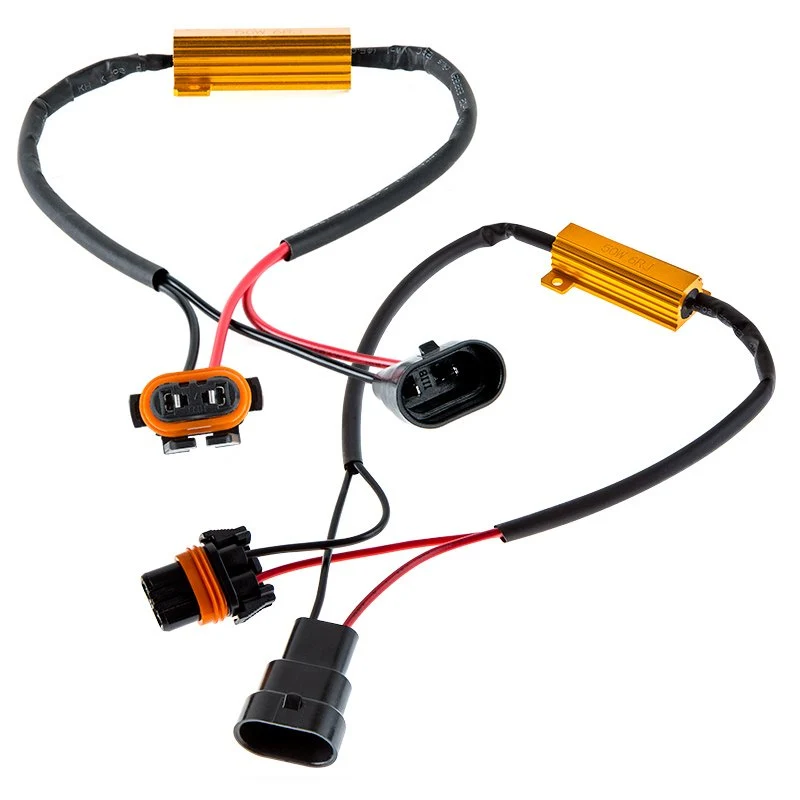
How does a CANbus Decoder/Resistor Work?
A CANbus decoder is a device used to decode CANbus signals.The CANbus, or Controller Area Network bus, is an industry standard used for communication within vehicles.
In electrical systems, a “bus” is the equivalent of a hub that allows different circuits or components to communicate with each other. In automobiles, the CAN bus connects the various components of the vehicle and is able to monitor their operational status. For example, if tire pressure is too low, the system displays an error message on the dashboard via the CAN bus.
The decoder regulates the current to simulate the normal operation of certain components. For example, when an abnormal current is detected in the headlights, it can be automatically adjusted to a normal level so that the vehicle’s self-testing system considers everything normal and does not illuminate the malfunction indicator. This adjustment is realized through decoding technology to ensure the stable operation of the vehicle system.
The choice of CANbus decoder should be based on the type of bulb you are using. If the CANbus device has a bulb fitting, select the decoder that corresponds to the bulb model. For example, use the H7 Headlight Canbus Adapterr for H7 LED headlights and the 5W adapter for W5W or 5W fittings. If the bulb wattage does not match, select the closest wattage adapter.
Trouble-Free Canbus LED Headlight Bulb Recommendations
Seeking the perfect lighting experience, but don’t want to worry about decoding for the installation of LED headlights? Then HILOWBIN V8 Series LED automotive headlights are undoubtedly your ideal choice.
HILOWBIN V8 series LED headlight bulbs, both sides have 9pcs large size CSP wick design, providing up to 110W 18000LM excellent lighting output (dual bulb set). 6500K cold white light design, not only enhance the visibility at night, but also enhance driving safety.

V8 LED car bulb is made of aircraft-grade aluminum body and embedded with 12,000 rpm high-speed sliding turbo fan to ensure effective heat dissipation. It is suitable for 99% of car models and installs without error or flickering, realizing a truly plug-and-play convenient experience.
V8 LED headlight bulb models are abundant with a variety of choices to meet the lighting needs of different car models. Pick the most suitable bulb model for your car and enjoy the upgraded lighting effect instantly.
Conclusion
With Canbus-compatible LED bulbs or integrated decoder and resistor solutions, vehicle owners can effectively resolve compatibility issues between the Canbus system and LED headlamps, eliminating false positives and ensuring a safe, worry-free experience of the efficient illumination and modern appearance of LED headlamps.
We recommend HILOWBIN LED headlight bulbs, which offer excellent Canbus compatibility, clear and bright illumination, and a stylish design that adds a distinctive look to your car.

